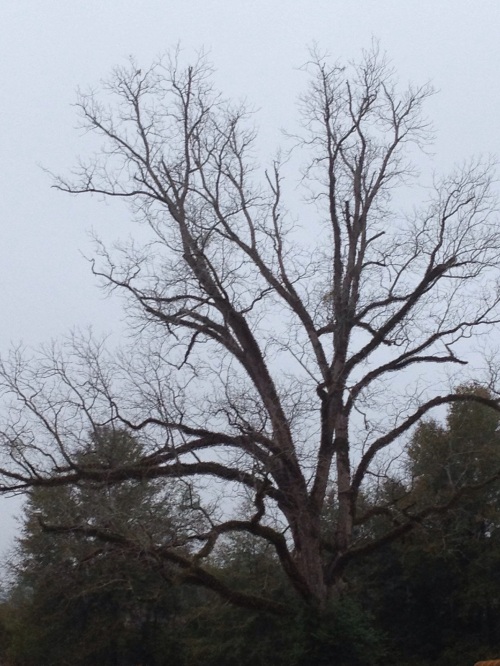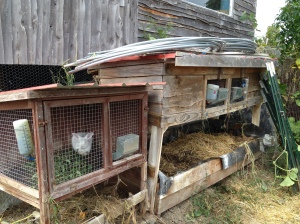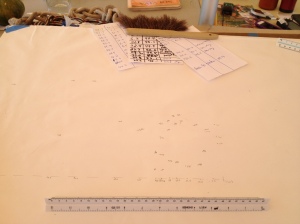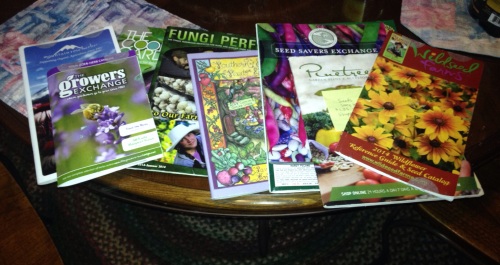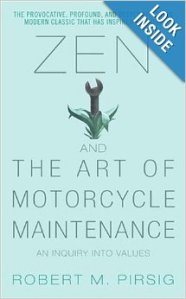This is the account of my adventure at the Permaculture Design Course at Spiral Ridge in October of 2013 http://www.spiralridgepermaculture.com
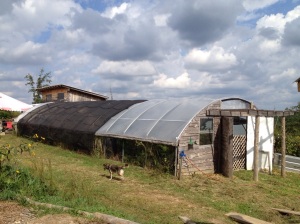
Day 2 started with hearty breakfast…scrambled eggs, oatmeal, yogurt and assorted nice things to add to that like nuts, raisins, honey, jam etc. We also had coffee around the campfire every morning.
They assigned chores- animal care, working in the green house, and more boring stuff like dish washing and wood chopping. Some of our crew cheerfully volunteered for stuff like dish washing and wood chopping. Some of our crew cheerfully volunteered for humanure duty- which meant emptying the bucket into the humanure pile, which must cook for a year before it can go out as fertilizer. They don’t put it on vegetables. They cover each poop with cedar chips from an Amish saw mill. This was not a required duty.
Site Tour- we walked the upper part of the Farm…it was so interesting that we only got around to the top half. Some highlights…Water cistern attached to the Well- covered in insulation. and attached to a solar panel. Whenever the sun shines, water pumps into the cistern (5000 gal) which is used for clean drinking water and other uses. They also collect rain water from roofs, and grey water from washing and showers which is funneled into tanks and a pond.
We saw the herb garden next to the Cabin which contained some herbs I knew, and a lot I did not know, There was lots of blooming stuff including milk weed, so all week the Monarch butterflies stopped by for a snack on their way south for the winter. There were stinging nettles which are edible, but also have medicinal uses, Comfrey planted for it’s deep root that brings up nutrients, the leaves can be used as mulch. Yarrow and plantain are nutrient accumulators, There was a small Curly Willow next to the pond which can be cut down and will grow back from the roots (coppiced) There was a water plant in the pond… The herb garden area was a meandering Keyhole garden to improve edges and supply many different plants- there were about 100 different plants in about 100 sq feet- and room for more. The Cabin had 2 vines…a kiwi on one side… that was loaded with kiwis, and a hops plant on the other. There was also a fig tree that had ripe fruit on it.
There is a 50 foot green house that has baby trees waiting to be planted, a large overgrown basil (maybe left over from the winter- I saw it outside as well, A barrel full of duckweed to restock the pond in the spring, a greenhouse inside that was insulated for warmer space- it was currently empty. There was a large metal tub which they us to mix up planting medium, which they make themselves from 3 or 4 ingredients.
We saw the rabbit hutch which fertilizes the worm composting operation, where they add coffee grounds and egg shells. They have 1 buck and 2 does, which can supply you with a rabbit every week if all goes well and you don’t name them. We fed the rabbits greens from the garden and rabbit kibble.
Next to the rabbits was the gate to the chicken house where they had 17 chickens one of which was a rooster. There was netting over the chicken house, probably to discourage hawks. The chicken house had 3 nesting boxes, which were accessible from outside, so you could open it to collect eggs. Ducks from the duck pond can come into that area, as well as the chickens can out into the duck area. Cliff doesn’t like the chickens too much, he thinks they scratch too much, he is planning to phase them out in favor of the ducks…but then they will have to hunt for eggs.
The Vegetable garden was below the greenhouse and was mostly finished with the summer vegetables, There were still lots of tomatoes, and comfrey was planted there as well as huge marigold plants. The water from the upper herb garden drained into the vegetable as well as some irrigating with a hose…which they also use to water the animals.
Lunches were generally soup and salad- They came up with amazing soups, and I loved all the salads. Jen made several different fermented sauerkrauts, but sometimes green salads and coleslaw, and always interesting dressing and condiments.
Wild design- only noted 2 things in my notes- but both are interesting. “Nothing in Nature is random- all is in patterns- based on energy flows” “By recognizing patterns we can manipulate and enhance energy flows. And one that is not in my notes. The answer to very many permaculture questions…”It depends…”
Patterns in Nature- One of my favorite classes. Dendritic patterns of trees both in the branches and roots…It reminded me of Antoni Gaudi and his amazing cathedral in Barcelona, Spain. Hexagon as in honey bees. Nesting patterns of tree rings and rainbows, Lobing as in flower petals and pine cones. Spirals…ahh the amazing spiral. Start with hair swirls and finger prints then move to zinnias and hurricanes. Then consider the Fibonacci sequence which is found all over in nature…it can be a whole blog in itself. Stars for explosions and dandelions, Snowflakes. And finally Overbeck Jet which is like breaking waves, and mushrooms and atomic bombs and bones connected, and musical frequencies. Imposing squares and rectangles on natural patterns creates problems- poor wind and water flow and less edge effect. Natural patterns are more harmonic.
After a delicious dinner, they set up the computer and we watched case studies on u-tube…Sepp Holtzer- the wild permaculturist in Austria, An edibile food forest in a Davis, California subdivision, Geoff Lawson an Australian permaculture guru talking about urban permaculture and several more. Totally exhausted, Miriam and I were both staying at the Farm, carpooled back.









